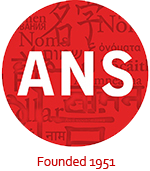 The American Name Society requests nominations for the “Names of the Year for 2020”. The names selected will be ones that best illustrate, through their creation and/or use during the past 12 months, important trends in the culture of the United States and Canada.
The American Name Society requests nominations for the “Names of the Year for 2020”. The names selected will be ones that best illustrate, through their creation and/or use during the past 12 months, important trends in the culture of the United States and Canada.
Nominations are called for in the five following categories:
- Personal Names: Names or nicknames of individual real people, animals, or hurricanes.
- Place Names: Names or nicknames of any real geographical location, including all natural features, political subdivisions, streets, and buildings. Names of national or ethnic groups would be included here.
- Trade Names: Names of real commercial products, as well as names of both for-profit and non-profit incorporated companies and organizations, including businesses and universities.
- Artistic & Literary Names: Names of fictional persons, places, or institutions, in any written, oral, or visual medium, as well as titles of art works, books, plays, television programs, or movies. Such names are deliberately given by the creator of the work.
- Miscellaneous Names: Any name which does fit in the above four categories, such as names created by linguistic errors, names of particular inanimate objects other than hurricanes, names of unorganized political movements, names of languages, etc. In general, to be considered a name such items would be capitalized in everyday English orthography.
Winners will be chosen in each category, and then a final vote will determine the overall Name of the Year for 2020. Anyone may nominate a name. All members of the American Name Society attending the annual meeting will select the winner from among the nominees at the annual ANS meeting on January 24, 2021
Advance nominations must be received before January 21, 2021.
You can submit your nominations via this form: https://www.surveymonkey.com/r/LVGCQRZ
Alternately, you can download the form and email it to Deborah Walker: debwalk@gmail.com
Nominations will also be taken from the floor at the Annual Meeting.
Thank you for your nominations!
 Registration is now open for the 2021 ANS Conference. The ANS conference will take place on the Crowdcast platform from January 22-24, 2021.
Registration is now open for the 2021 ANS Conference. The ANS conference will take place on the Crowdcast platform from January 22-24, 2021.



 At the meeting, members may present papers in formal theme sessions, participate in a toponymic fieldtrip and attend the annual general meeting of the Society. In 2021, the CSSN will meet as part of the Congress of the Humanites and Social Sciences
At the meeting, members may present papers in formal theme sessions, participate in a toponymic fieldtrip and attend the annual general meeting of the Society. In 2021, the CSSN will meet as part of the Congress of the Humanites and Social Sciences  The conference topics will be covered Toponymy in Cartography, Art in Cartography, Atlases, Cartographic Heritage into the Digital Domain, Cartography and Children, Cartography for Early Warning and Crisis Management, Cognition in Geovisualization, Education and Continuous Learning in Cartography, Generalization and Multiple Representation, Artificial Intelligence in Mapping, Social Sensing and Visual Analytics, History of Cartography etc.
The conference topics will be covered Toponymy in Cartography, Art in Cartography, Atlases, Cartographic Heritage into the Digital Domain, Cartography and Children, Cartography for Early Warning and Crisis Management, Cognition in Geovisualization, Education and Continuous Learning in Cartography, Generalization and Multiple Representation, Artificial Intelligence in Mapping, Social Sensing and Visual Analytics, History of Cartography etc. The current issue of the Journal of African Onomastics
The current issue of the Journal of African Onomastics 
